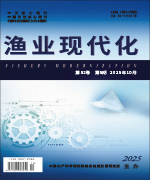ZHANG Mingming1, 2, JIANG Xinglong1, 2, YANG Ruolan1, 2, ZHUO Yinuo1, 2
In order to solve the problems of large amount of water drainage, deterioration of water quality in the late stage of eel culture, and high investment and operation cost of equipment and facilities, this study optimized a water-saving and emission-reducing aquaculture process for eel and applied it in practical scenarios. An orthogonal experimental design was employed to develop an in-situ water treatment technology using "bacterial granules-composite bacterial liquid agents" based on three selected functional strains with nitrogen and phosphorus removal capabilities. The optimized industrialized water-saving and emission-reducing aquaculture process was then demonstrated through controlled experiments at different stocking densities for fingerling eel over a 120-day culture period. The results showed that in Treatment Group I (500 ind./m³), the harvest size, yield, specific growth rate, and absolute weight gain rate of the fry were significantly higher than those of the control group by 41.4%, 43.9%, 17.3%, and 48.2%, respectively (P<0.05), while the feed conversion ratio was significantly lower by 17.6%(P<0.01). In Treatment Group II (750 ind./m³), the harvest size, yield, specific growth rate, and absolute weight gain rate were significantly higher than the control group by 20.5%, 83.0%, 8.9%, and 23.3%, respectively (P<0.05), with the feed conversion ratio significantly lower by 11.0%(P<0.01). Both treatment groups achieved over 75% water savings and emission reductions compared to the control. In Treatment Group I, the average concentrations of ammonia nitrogen, nitrite nitrogen, nitrate nitrogen, total nitrogen, and total phosphorus in the water were significantly lower than those in the control group by 90.8%, 80.7%, 10.0%, 51.5%, and 38.7%, respectively(P<0.05). In Treatment Group II, these concentrations were significantly lower by 88.0%, 74.2%, 5.6%, 42.6%, and 21.3%, respectively(P<0.05). These findings indicate that this aquaculture process offers advantages such as water conservation, emission reduction, sustained high water quality, and low investment and operational costs, suggesting broad application prospects.
